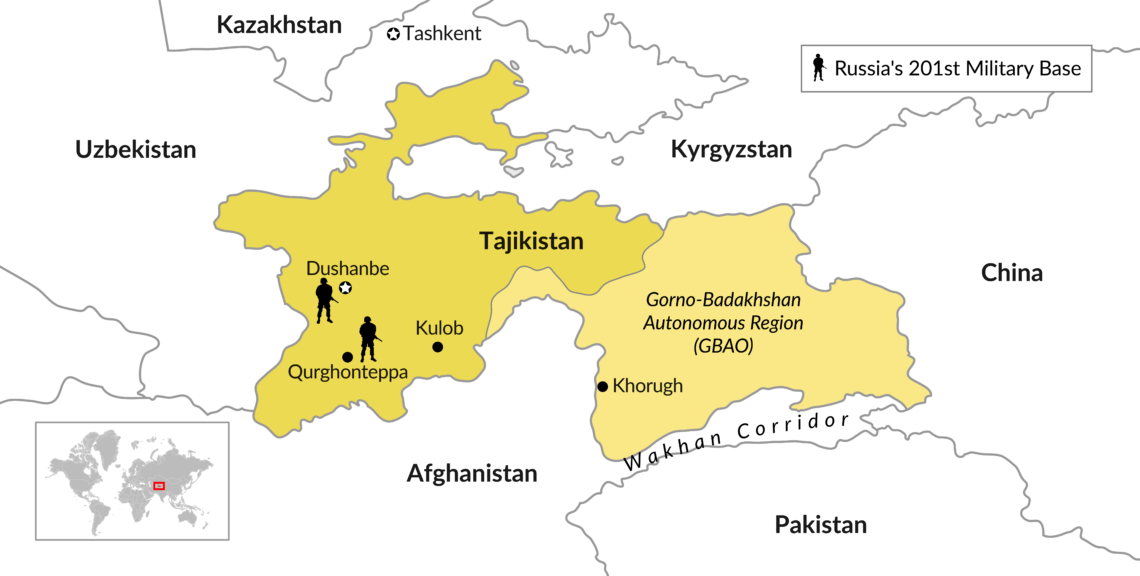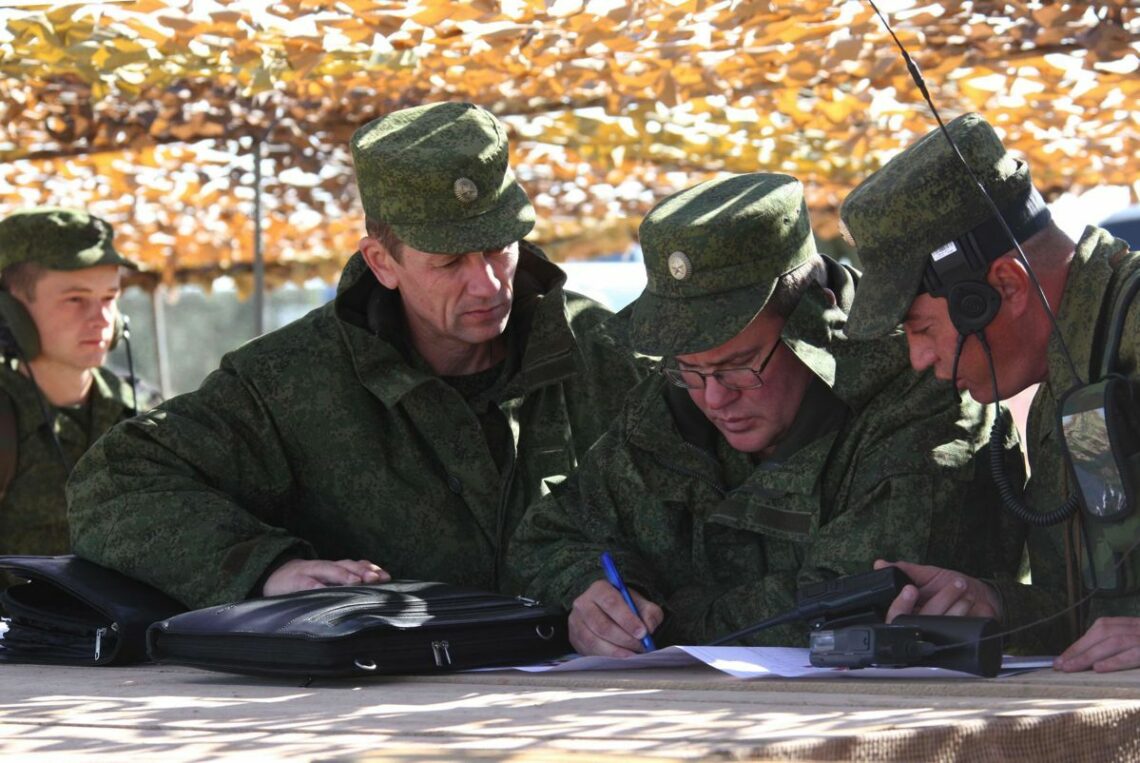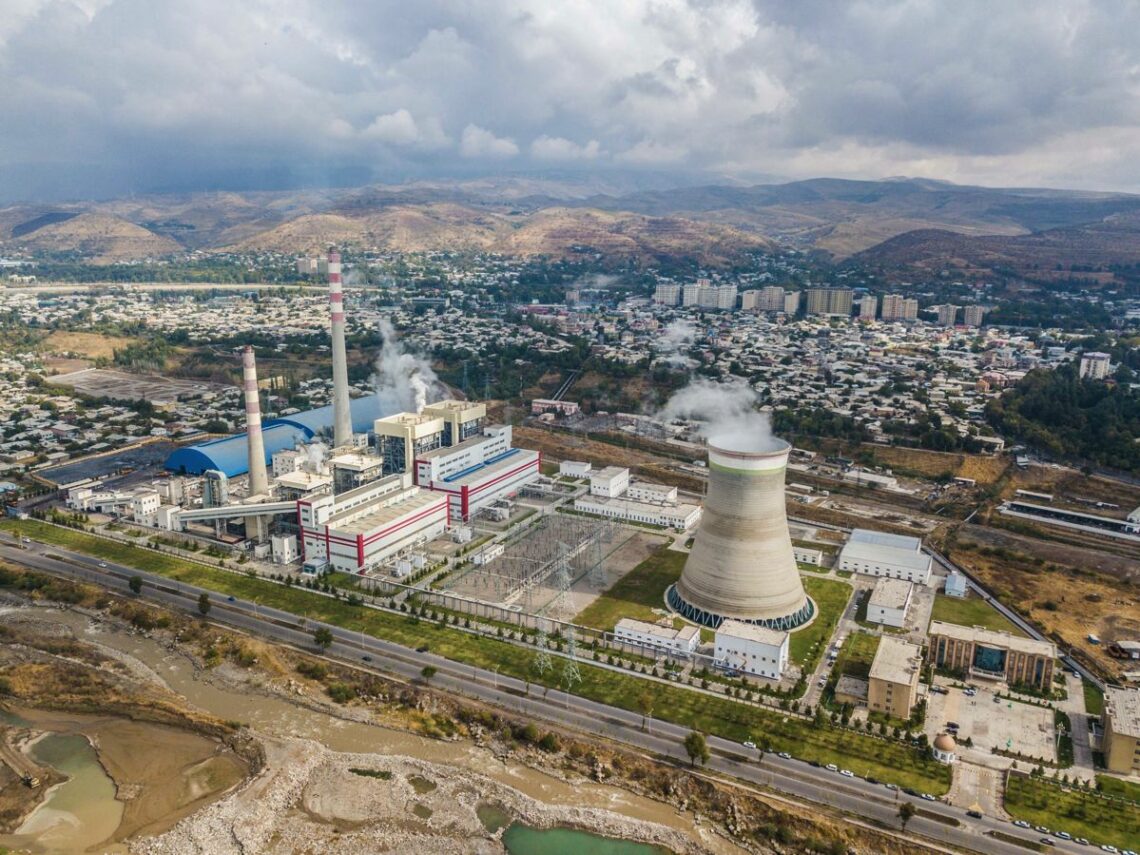Tajikistan: A Sino-Russian flashpoint?
The drawdown of American troops in Afghanistan and Chinese persecution of the Uighur minority in Xinjiang could turn Asia into a hotbed of jihadist terrorism. One country that is particularly vulnerable to such a resurgence is Tajikistan, which is also the area where Russian and Chinese security interests could come into conflict.

In a nutshell
- Islamist terrorist infiltration is weakening Tajikistan’s grip on its pivotal eastern province
- The area is a vital security zone to China, while Russian recently deployed troops there
- A violent flare-up could test mostly cooperative relations between Moscow and Beijing
The collapse of the Islamic State’s (IS) so-called caliphate in Iraq and Syria sent a wave of jihadist fighters back to their countries of origin. One destination for this trek is northern Afghanistan, where the new arrivals are being blended with Taliban militants. Although their exact numbers are impossible to ascertain, this group has emerged as a rival to the Taliban, contributing to the recent spike in violence in the region. From a Russian perspective, this represents a nightmare coming true.
The Kremlin has long been fearful that the drawdown of American troops in Afghanistan would lead to a Taliban resurgence. Moscow’s concern centers on the withdrawal’s spillover effects, which could spur Islamist radicalization in Central Asia, an area Russia has long regarded as its own backyard. The influx of battle-hardened IS fighters exacerbates such fears.
Developments in China’s easternmost province, Xinjiang, have added a new dimension. Beijing’s increasing persecution of the region’s Muslim Uighur minority has caused many Uighurs to leave and join the struggle in Afghanistan. Here the worry is that neighboring countries in Central Asia may be transformed into safe havens for Uighur terrorists planning attacks against Chinese interests, inside China and abroad.
Collision zone
The country where these two sets of fears intersect, and where Russian and Chinese security interests may most easily come into conflict, is Tajikistan. Of the five countries that make up Central Asia, it is the smallest, the poorest and the most exposed.
President Emomali Rahmon, in power since 1994, has long tried to conduct a “multi-vector” foreign policy, balancing waning Russian influence against China’s growing clout. The country’s geographic position, combined with its economic weakness, makes this an increasingly difficult game to play.
Tajikistan shares a 1,357-kilometer border with Afghanistan that is commonly held to be extremely porous, offering ample scope for lucrative drug smuggling and infiltration of terrorists. The net effect has been to boost corruption and undermine the Tajik state. It also shares a 477-kilometer border with China, which has been a boon in generating income from the Middle Kingdom’s flagship Belt and Road Initiative (BRI). Now, however, this proximity is producing unwanted spillover effects from the persecution of Uighurs in Xinjiang.
Eastern Tajikistan was pivotal in the civil war of the early 1990s, and it has been restive ever since.
The potential flashpoint lies in eastern Tajikistan, in the Gorno-Badakhshan Autonomous Oblast (GBAO). This area was pivotal in the Tajik civil war of the early 1990s, and it has been restive ever since under the rule of local power brokers. Following the assassination of a provincial leader in 2012, Tajik security forces mounted one operation that led to the deaths of nearly 50 people.
In July 2018, rising tensions prompted a counterinsurgency exercise in the region involving some 10,000 Tajik servicemen, mainly reservists, designed to simulate the “elimination of terrorists” infiltrating across the border from Afghanistan. Some 400 Russian troops with heavy equipment also took part.
Security commitments
This was not the first time that Russian and Tajik troops have trained together. Counterterrorism drills held in March 2017 involved 50,000 Tajik and 2,000 Russian troops. Ahead of those exercises, in a first for Central Asia, Russia even deployed Iskander-M missiles to practice strikes against terrorist bases across the border. In July 2018, a Russian mechanized infantry unit with 3,200 troops and BTR-82A armored personnel carriers, supported by Mi-24 attack helicopters and rocket artillery, simulated a counterattack against a cross-border incursion. These latter drills were conducted in western Tajikistan, near Russia’s 201st Military Base.
Moving Russian troops into the GBAO was a new development. A likely reason is that China has departed from its traditional posture of being focused on business alone. Anxious to provide security for their economic interests in Central Asia, the Chinese authorities have taken a more active stance on military cooperation as well.

Beijing has provided support for the building of 11 border guard posts along the Tajik border with Afghanistan, together with a border guard training center. It has begun training Tajik servicemen, and in 2016 it even held joint anti-terror drills that involved 10,000 Tajik troops and a symbolic “mobile company” of Chinese troops.
Although Beijing denies any such involvement, Kabul confirms that China is also helping Afghanistan build a military base in Badakhshan province, across the border from the GBAO, and there are unconfirmed reports that China has been conducting patrols along the Afghan side of the border since at least 2016 and has even “built an installation in a remote corner of the GBAO, near both Xinjiang and the Afghan border,” according to the Crisis Group website.
Terrorist threat
One reason why the GBAO could become a flashpoint in Sino-Russian relations is a regional agreement on combating terrorism, the Quadrilateral Cooperation and Coordination Mechanism, which China signed with Tajikistan, Afghanistan and Pakistan in 2016. Although the venture may not get off the ground, it does represent a vital first step in China carving out a security relationship with other countries in the region that excludes Russia.
Another reason for Russia’s new presence in the GBAO is that the region borders on the strategically important Wakhan Corridor, a narrow stretch of land that separates Tajikistan from Pakistan and represents China’s only direct point of entry into Afghanistan. Russia knows it is facing a determined bid by China to expand its presence and influence at a pivotal location in Central Asia. Its participation in the military exercise in the GBAO may well have been intended as a signal to Beijing that its increased military posture is not welcome.
Future scenarios must include the potential spread into the region of the Sunni-Shia conflict within Islam.
Future scenarios must also include the potential spread into the region of the conflict between Sunni and Shia Islam. While both Uighurs and Tajiks are Sunni, the Pamiris in the GBAO are Shia. While Tajikistan and Iran share the same Persian heritage, implying immunity to pan-Turkism, Iran is the main champion of the Shia. Relations between the two countries are tense.
In 2015, Tajikistan banned the Islamic Renaissance Party of Tajikistan (IRPT), which had been the only registered Islamic political party in Central Asia. It had tens of thousands of members and its leaders had served in government. The IRPT was claimed to have strong links with Iran. Following the ban, party leader Muhiddin Kabiri attended a religious conference in Tehran, where he also met with Iran’s Supreme Leader, Ali Khamenei.
Among other incidents, a terrorist killing in July 2018 of four foreign cyclists on a ride through Tajikistan was blamed by the Tajik government on IS militants that it claimed were members of the IRPT and had been trained in Iran. While IS was happy to claim credit, Iran denied any involvement.
In a sign that the Sunni-Shia struggle may be about to enter Central Asia as well, Saudi Arabia makes no secret that its lavish aid to Tajikistan is intended to push Iran out of the region. Looking forward, the key question concerns how the Tajik government will seek to address these challenges. This is where its economic weakness will play a role.
Chinese method
Tajikistan’s relations with China have until recently been dominated by the financial juggernaut of the BRI, which is pouring investment into the building of highways, along with railways and pipelines. China has surpassed Russia as the country’s largest foreign investor, and substantial parts of these funds have likely contributed to the enrichment of the local political elite.
The downside is that Chinese loans, besides encouraging corruption, appear to have fed the regime’s appetite for showcase projects with little to no impact on economic performance. Examples of such empty spending range from the world’s tallest flagpole and the world’s largest teahouse, to the region’s largest museum and theater. Dushanbe has also coupled its eagerness to accept loans with a reluctance to service its debt, preferring to trade land and mining rights for debt relief.

In 2011, Tajikistan closed a deal ceding 1,100 square kilometers of land to China, near the strategic Wakhan Corridor. It also allowed Chinese farmers to lease 2,000 hectares of land, close to the Xinjiang-Afghanistan border junction. Chinese companies have since also been granted exclusive mining rights to at least two gold deposits in return for completing a 400-megawatt combined heating and power plant in Dushanbe.
The eventual outcome of this process threatens to follow a pattern familiar from China’s investments in natural resources in Africa. As contracts are signed with no local financial participation, Chinese companies are left free to exploit local resources with Chinese workers. The result could be to transform Tajikistan into a virtual colony. If this happens, Dushanbe’s ambition to pursue a “multi-vector” regional and security policy will be seriously curtailed.
Military presence
Tajikistan’s relations with Russia continue to be shaped by powerful dependencies inherited from the Soviet era. Although the country is wary of joining the Eurasian Economic Union, extensive business and education networks bind it to Russia, along with its membership in the Russian-led Collective Security Treaty Organization. Given that Tajikistan is not susceptible to pan-Turkism, an added benefit to Moscow is that the Russian language has not come under any pressure there, as has been the case in Kazakhstan.
As part of its security commitment, Russia maintains a significant military presence in Tajikistan. Its 201st Military Base near Dushanbe, home to 7,000 troops, is the Russian military’s largest facility outside Russia itself. Under an agreement signed in October 2012, the deployment will continue at least until 2042. The ground units stationed there – equivalent to a reinforced mechanized infantry brigade – have been modernized with the delivery of 100 new armored fighting vehicles in 2016, including BTR-82A armored personnel carriers and T-72B1 tanks.
China’s growing role in securing the Tajik-Afghan border has not been welcome news to the Kremlin.
Speaking at a Shanghai Cooperation Organisation (SCO) meeting in April 2018, Defense Minister Sergei Shoigu noted the importance of upgrading Russia’s military capabilities in the region. Yet while the garrison in Tajikistan continues to play a role in counterterrorism operations, Russian forces no longer actively patrol the border with Afghanistan. Russian border guards did serve in that role until 2005, but following a series of scandals involving alleged cooperation with drug smugglers, they were asked to leave and have not been allowed back. In this context, China’s growing role in securing the Tajik-Afghan border has not been welcome news to the Kremlin.
Coming to terms
Events in Tajikistan will increasingly be driven by China’s mounting concern about the radicalization of its Uighur minority population at home and the growing influence of the Taliban and IS fighters in a region that is increasingly vital to Chinese economic interests.
Russia and China have a history of conducting joint anti-terror operations within the SCO, but signs have appeared that Beijing may be losing interest. Even so, China has mildly accepted a transparent Russian ploy to dilute its regional influence by granting both Iran and Afghanistan observer status in the SCO. If Beijing really intends to take care of security interests on its own, perhaps it can afford to indulge the Kremlin’s urge for great-power grandstanding.
Already sidelined as an economic power in Central Asia, Russia may soon discover it is about to be displaced as a security provider. And it will find that Beijing is copying its technique of plausible deniability by deploying military contractors.
Whether China has the clout and experience needed to police the borderlands of Central Asia and Afghanistan is a separate question. Beijing not only risks becoming entangled in the Sunni-Shia struggle; it will also have to contend with alleged covert Russian arms shipments to the Taliban in Afghanistan, part of a broader effort to undercut U.S. influence in the region.
A flare-up of serious violence in the GBAO could bring these various pressures to a head, exposing Tajik weakness. That could force Russia and China to come to terms on their regional division of labor.







